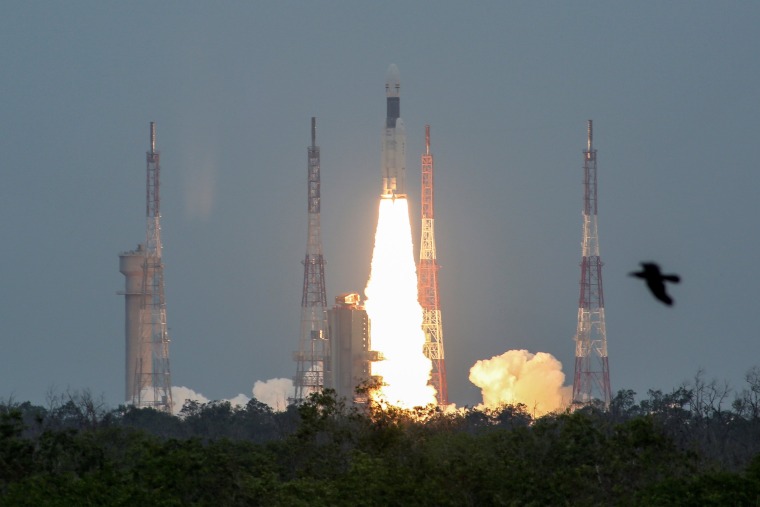SRIHARIKOTA, India — India successfully launched an unmanned spacecraft to the far side of the moon on Monday, a week after aborting the mission due to a technical problem.
Scientists at the mission control center burst into applause as the rocket lifted off in clear weather as scheduled at 2:43 p.m. K. Sivan, head of the Indian Space Research Organization, or ISRO, said the rocket successfully injected the spacecraft into orbit.
The spacecraft — named Chandrayaan, the Sanskrit word for "moon craft" — is scheduled to land on the lunar south pole in September and send a rover to explore water deposits that were confirmed by a previous mission that orbited the moon.
India's first moon mission orbited the moon in 2008 and helped confirm the presence of water. The country plans to send its first manned spaceflight by 2022.
The launch a week ago was called off less than an hour before liftoff due to a "technical snag." Media reports said the launch was aborted after ISRO scientists identified a leak while filling helium in the rocket's cryogenic engine. The space agency neither confirmed nor denied the reports, saying instead that the problem had been identified and corrected.
The spacecraft is carrying an orbiter, a lander and a rover that will move around on the lunar surface for 14 earth days. It will take around 47 days to travel before landing on the moon in September.
India put a satellite into orbit around Mars in the nation's first interplanetary mission in 2013 and 2014.
